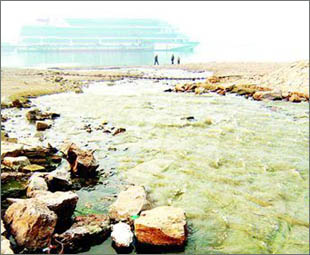| Home / Environment / News | Tools: Save | Print | E-mail | Most Read |
| Report Shows Yangtze Water Environment Deteriorating |
| Adjust font size: |
The first annual health report on the Yangtze River indicates that the billions of tons of waste that continue to be dumped into
The 2007 annual report on The report says the river's annual harvest of aquatic products dropped from 427,000 tons in the 1950s to about 100,000 tons in the 1990s.
A separate study by the Yangtze River Water Resources Commission shows cities along the river discharge at least 14.2 billion tons of polluted water every year, 42 percent of Pollution, damming and too many boats have caused a dramatic decline in Yangtze aquatic life. While rare species such as the white-flag dolphin are feared to be extinct, even common species such as carp are gasping for survival, the report said. "The impact of human activities on the Yangtze water ecology is largely irreversible," said Yang Guishan, a researcher of the Nanjing Institute of Geography and Limnology under the The report, complied by Yang's institute, the Yangtze River Water Resources Commission and the WWF, also warned of the higher flood risks. The Yangtze accounts for about 35 percent of "Flood control remains an arduous task along the Yangtze, given the rising temperature and frequent occurrences of extreme weather over the last 50 years," said Yang. Although the Three Gorges Dam, the world's largest water storage facility, has reduced flood risks in the middle reaches, the risk of flooding remains high in the lower reaches, he said. The report also assessed the Three Gorges Dam project, showing its huge reservoir is seriously polluted by pesticides, fertilizers, and sewage from passenger boats. "We have to take into consideration the proper settlement of the people who have been displaced, environmental protection, heavy silting, and the prevention of geological disasters," said Weng who cautioned that "faster is not always better." The water level in the Three Gorges reservoir reached a landmark 156 meters last October, but some provinces want the level to go higher so more electricity can be produced, Weng said. "Higher water levels will worsen pollution and silting. We have to seek more sustained development," he said. (Xinhua News Agency April 16, 2007) |
| Tools: Save | Print | E-mail | Most Read |
 |
| Related Stories |
|
||||
